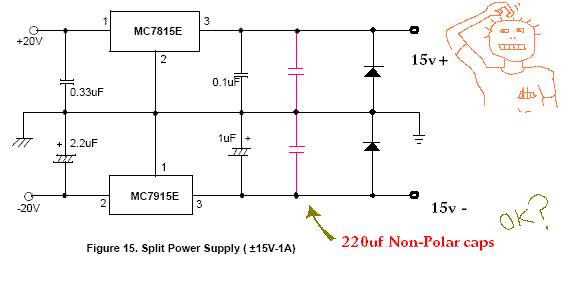buschfsu
Well-known member
why chose one over the other? i know what they are just not why you would need a polarized vs nonpolarized cap.
thanks
thanks
For a.c. voltage purposes, special
aluminium electrolytic capacitors, so called non-polarised aluminium
electrolytic capacitors, are manufactured in which each
supply lead is connected to an anode electrode with oxide layer.
Between the anodes, a cathode foil without supply lead is fitted.


polarized vs nonpolar caps in circuit design
Sure, could be of course, but I was wondering which one would be best, given that those other concerns didn't matter, as in the original question:that can lead to not only more work and more expense,
Enter your email address to join: